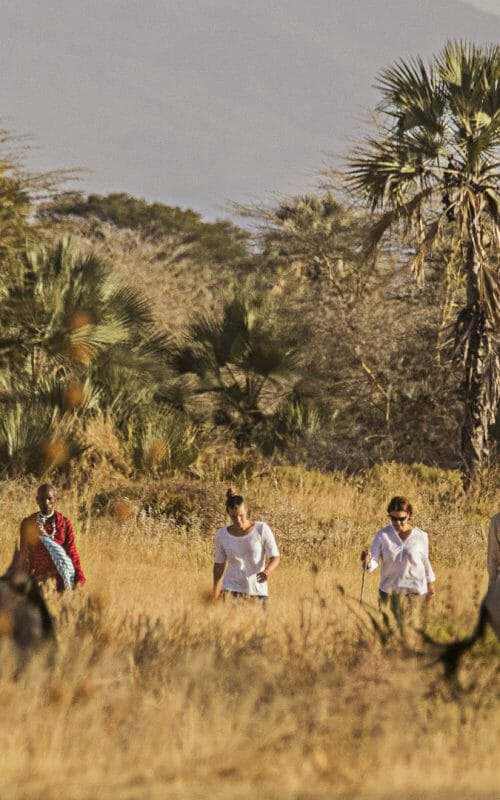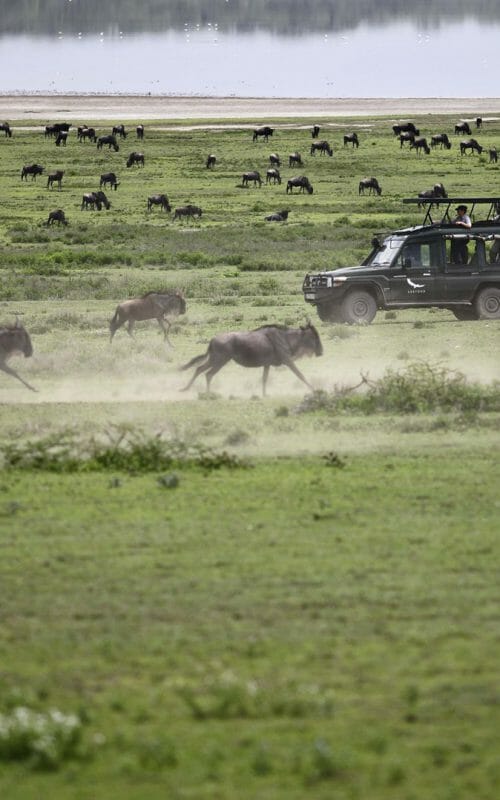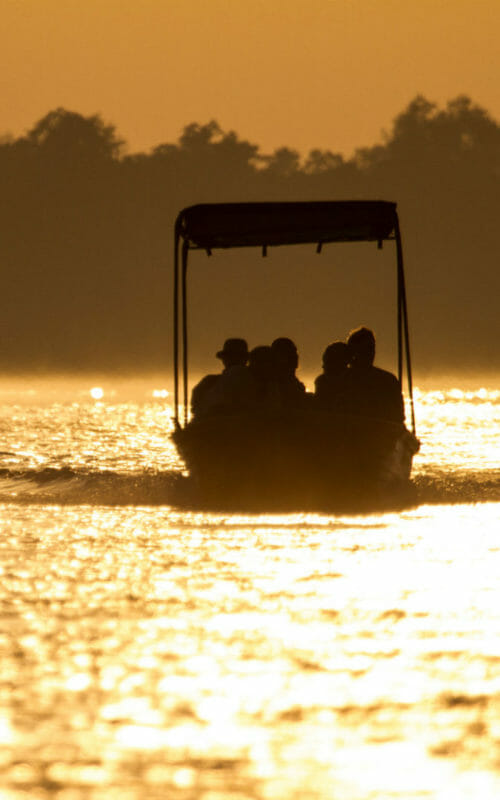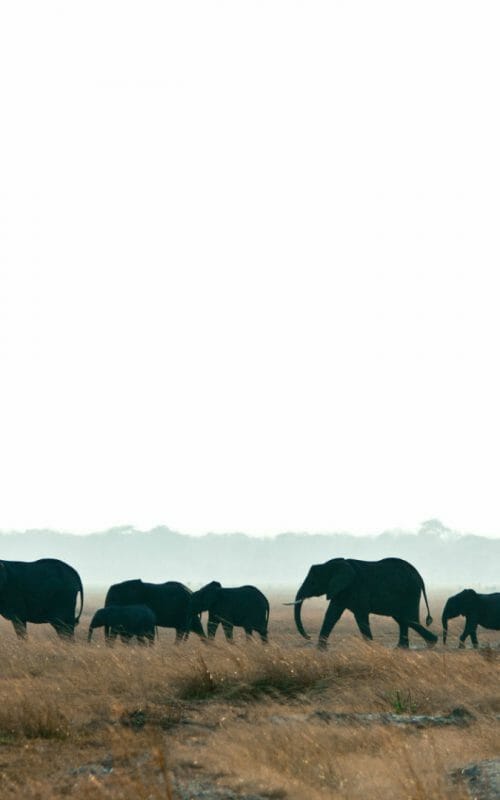This article is an excerpt from our new Steppes Traveller magazine – please get in touch with us to receive your free copy.
In October 2019, Jackie Devereux, Steppes Travel Africa expert, set off to explore northern Tanzania. But rather than sticking to the well-trodden “Northern Circuit” that many safaris focus on, she headed off-piste, leaving the vehicle behind and – as a consequence – the crowds.
She trekked through montane forest in Arusha National Park, crossed a canopy walkway in Lake Manyara National Park, spent a full day hiking along the rim of the Ngorongoro Crater, camped in the grass plains of the Serengeti and walked through a wilderness area inaccessible to vehicles. Here, we catch up with her to talk about the experience.
How was this trip different to your previous safaris in Tanzania?
It was far more adventurous and outdoorsy. Instead of being stuck in a vehicle for hours, I was out there in the wilderness walking. On foot, you become part of the bush. It’s a more sensory experience. You can feel and touch everything you encounter.
On my last safari, I saw so much wildlife, but this time I felt that I really saw the wilderness. There were times when I was walking that I felt I could have gone for miles without seeing another person. And somewhere like the Serengeti has remarkable resident game, so you don’t have to go around chasing the migration with all the other tourists to see animals; I still had fantastic sightings.
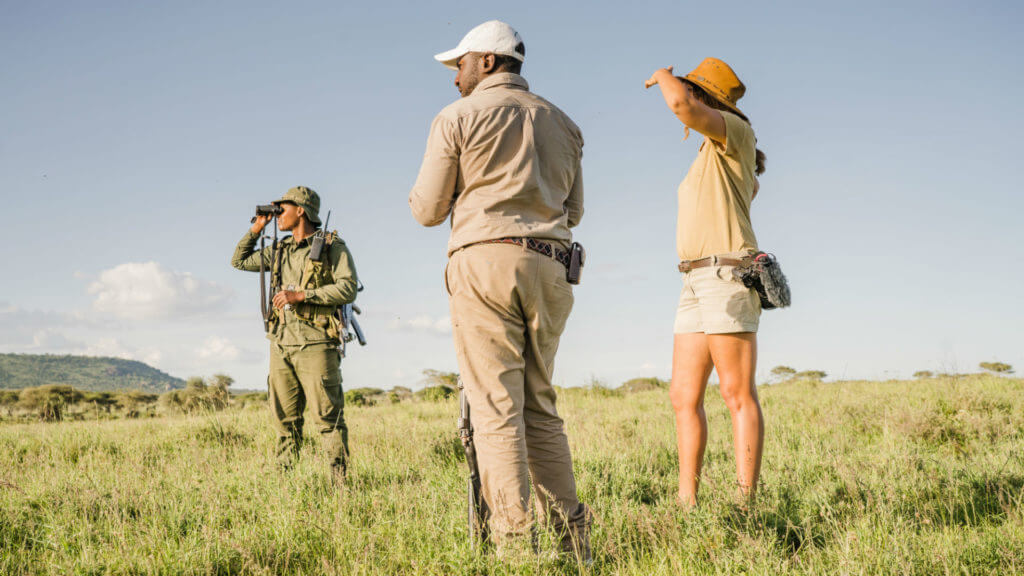
How did this change of pace affect your experience?
I felt energised. Having grown up in Zimbabwe, I sensed a connection to my ancestors – I grew up hearing stories of my grandfather walking 30 kilometres through the bush to see his uncle. So, for me, I was at home exploring on foot.
There was also a sense of a deeper respect for the wildlife than when in a vehicle. We walked in single file, only spoke in whispers and kept our senses alert. When we saw animals, we stopped and respected their space, observing from a distance. Waiting, breath held, we followed the guide’s instructions, as he considered the wind direction to prevent our scent reaching the animals.
Why is exploring on foot so special?
It is the smells that really bring it to life. On foot, you can use all your senses. But on a game drive, you only get to use your sight.
And, on this trip, I benefited from being able to explore where vehicles couldn’t. We headed into unspoilt wilderness areas in the Serengeti that were closed to 4x4s, walking over vast plains and between rolling hills.
In fact, just 30% of the Serengeti is accessible to vehicles. I was lucky enough to explore a fraction of the remaining 70%, heading out into a wilderness area dedicated to conserving the park’s dwindling population of rhinos.
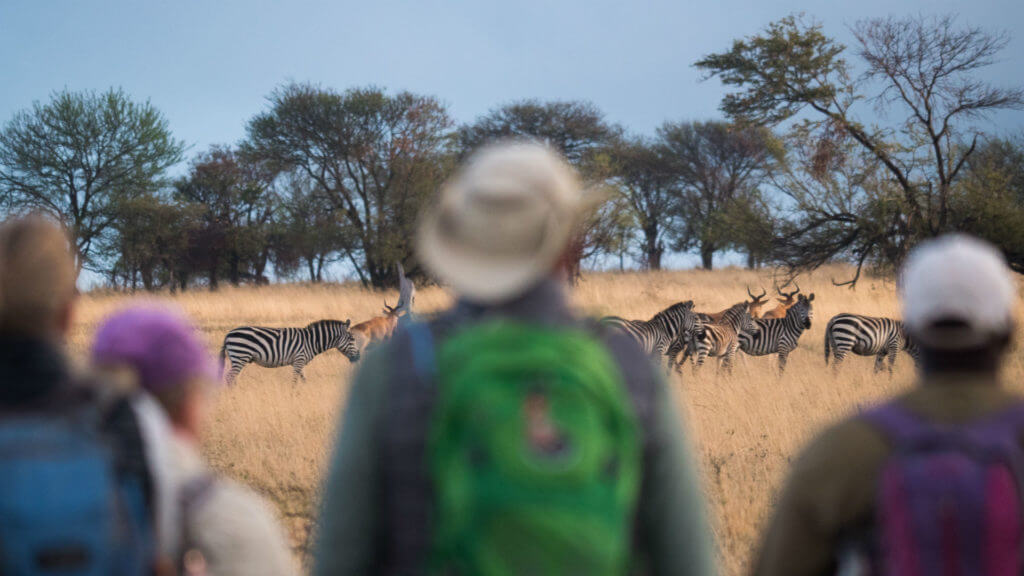
Exploring on foot, it seems like you experienced a lot. What did you learn on this trip?
Walking on foot, you feel incredibly exposed. Even though you don’t get as close to the animals, there is a sense of fear because you don’t have the protection of the vehicle. But I learnt that, as long as you respect their space, you’re okay. And, of course, never run!
The open landscape of northern Tanzania also helps you to feel more aware of the wildlife. On the first day, I felt nervous. But by the second day, I no longer felt like an intruder in this environment – I felt like I belonged. It’s amazing how quickly you learn to adapt.
Did you feel you missed out not having a vehicle?
Access to each area was by vehicle, which was enough for me. I was lucky enough to see plenty of wildlife, including big cats, on my drives into the wilderness areas. However, I admit that if it’s your first safari that may not be enough. But if you’re a seasoned safari goer, you will discover a completely fresh perspective.
I also felt far less tired after ten days of walking than a ten-day driving trip. Being in the fresh air every day was revitalising. The walks were a reasonable length, but the terrain was never challenging.
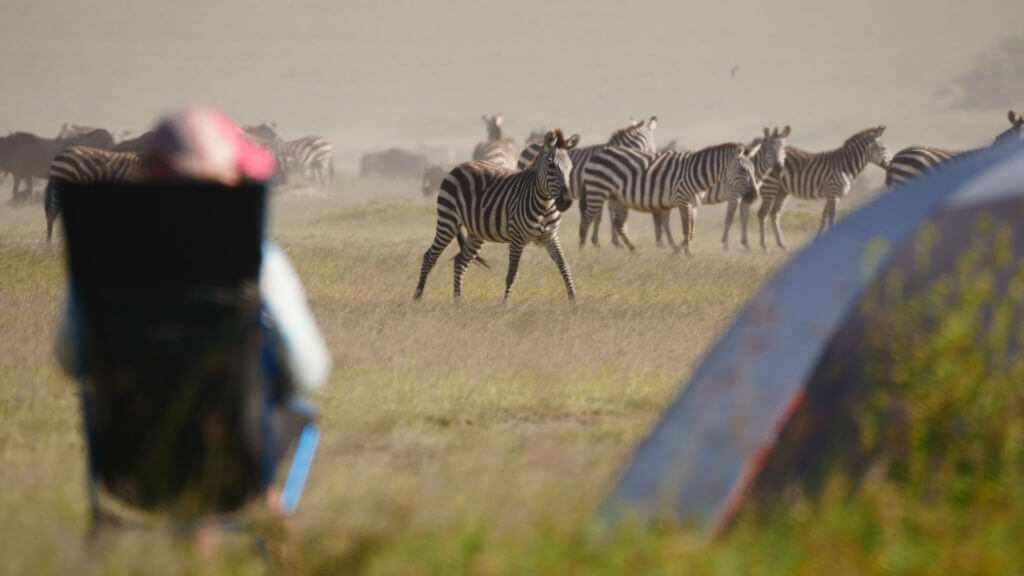
Did you still see plenty of wildlife?
Although I went off season, I saw plenty of wildlife. Encountering elephants, buffalos, wildebeest, zebras and giraffes on foot was a real privilege. But it was far more of a wilderness than wildlife experience. It was not all about the big animals; it was also about variety of landscapes and environments
What was your favourite experience? Why?
The Serengeti was the highlight for me. Being in an open space, with clear blue skies, expansive plains and beautiful rock kopjes was absolutely magical. The kopjes were beautiful places to just sit and watch the ecosystem move around me. This was a real safari.
I’ve done walking safaris in Botswana and Zambia – both renowned as walking destinations – but I found the Serengeti blew them away. The openness of the landscape means it is just made for walking.
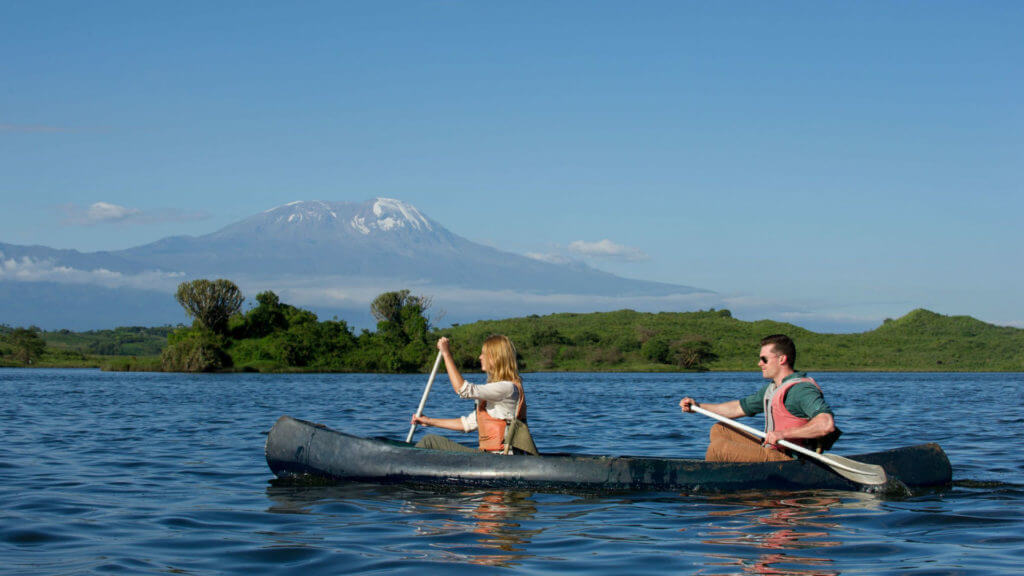
Which area surprised you the most and dispelled any preconceptions?
Definitely Arusha National Park. It’s located close to Kilimanjaro Airport and I had always thought it wouldn’t be worth visiting. However, I discovered a beautiful park that is filled with lush forest, crashing waterfalls and shimmering lakes. It’s can also only be explored on foot, by canoe or by mountain bike.


